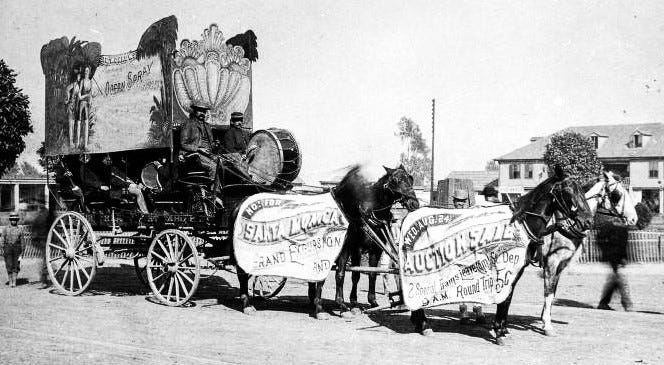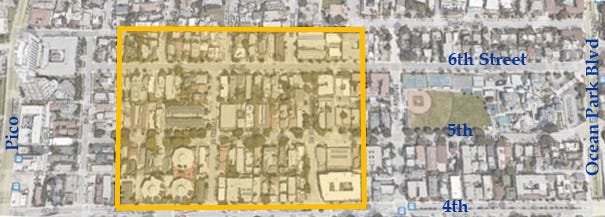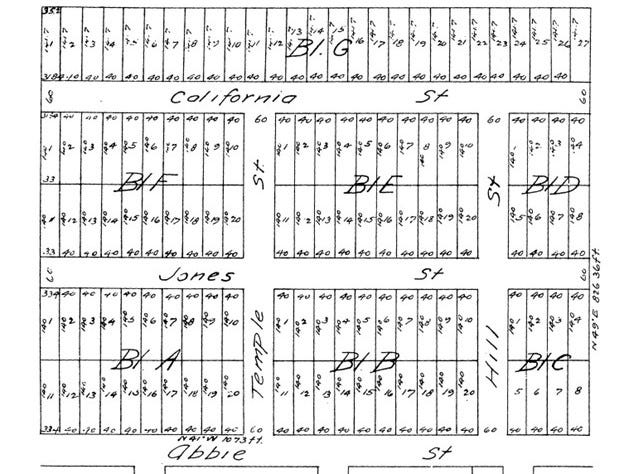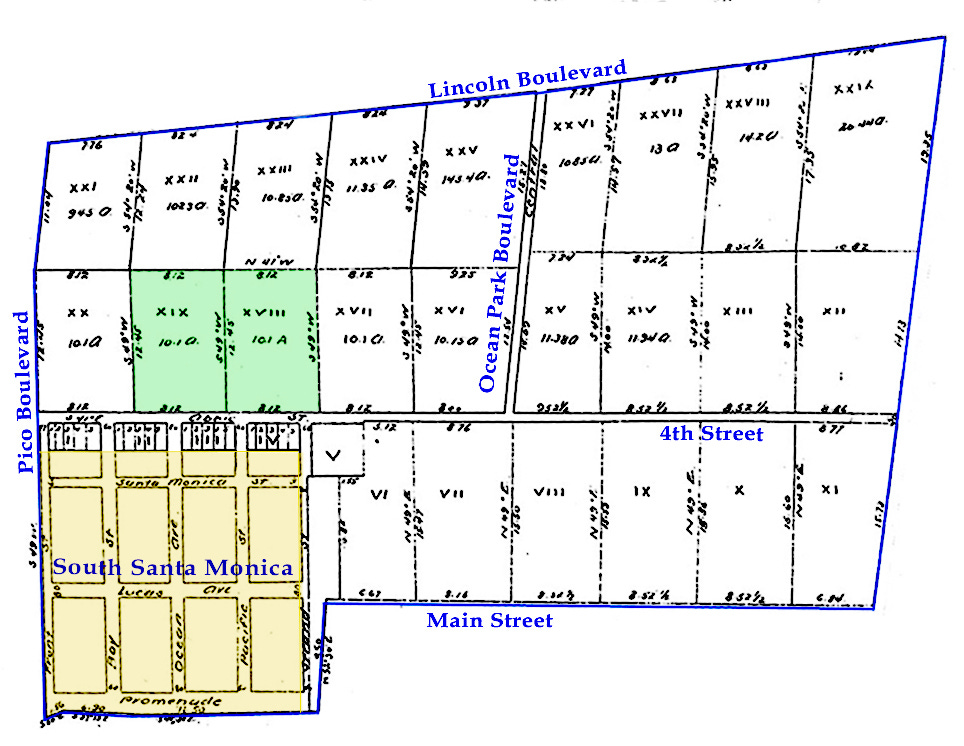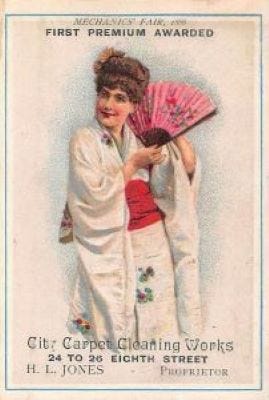The Ocean Spray Tract is a subdivision of Blocks 18 and 19 of the Lucas Ranch Tract by San Francisco entrepreneur H.L. Jones.
On Wednesday August 24, 1887, San Francisco entrepreneur H.L. Jones1 puts his 20 acre 1887 Ocean Spray Tract2 subdivision up for auction.
OCEAN SPRAY is the “Nob Hill” of all Santa Monica. Grandest view of mountain, valley and ocean, combined with such perfect accessibility to the most desirable part of Santa Monica.
Jones puts splashy advertisements in the newspapers; has a horse-drawn wagon with musicians and signs; and organizes two special trains from downtown Los Angeles - round trip 5 cents.
Sale will commence immediately on the arrival of the train. At the close of the sale lunch will be served, after which everybody can go to the beach and spend the afternoon. Two trains coming back. One leaves at 4 pm and the other at 5 pm giving those out of town an opportunity to return in time to connect with outgoing trains and residents of Los Angeles can stay an hour longer and enjoy a bath, an hour under your umbrella with you Sunday girl or to do as you please.
Less than 30 of the 120 lots sell. By 1888, the land boom of the 1880s collapses.3
H.L. Jones heads back to San Francisco, where he tries to restart his carpet cleaning business. Legally prevented from doing so,4 he starts a household furnishings auction business. Intermittently between 1890 and 1895, Jones advertises “Ocean Spray” for lease – 2 cottages on 20 acres; and from time to time visits his Ocean Spray Villa with his family (wife Emma & daughter Hazel).
Streets Established with the Ocean Spray Tract
An out-of-town resident, Jones is free with naming streets in his 1887 “Ocean Spray” subdivision. The existing Abbie has already become 4th Street in 1895.
Jones St. - becomes 5th Street in 1896.
California St. - becomes 6th Street in 1896.
Temple St. - becomes Pacific in 1917.
Hill St. - becomes Strand in 1896.
On Saturday, July 11, 1896, Jones revives his Ocean Spray Tract. Another old-time auction sale - "lunch will be served" and offers "one lot free to the lucky holder of a thirty round-trip ticket." The round-trip ticket from Los Angeles is now 30 cents. Ben E. Ward (1856 – 1907) is the auctioneer. The recently opened Ocean Park Loop electric trolley line runs down 4th St past the Ocean Spray Tract. All 88 remaining lots sell.
In 1908, H.L. Jones buys a property near downtown Los Angeles and builds a home. Emma gets one party in the new house before Jones sells it to Adolph Fleishman5 in 1909. Jones dies in San Francisco in 1923.
On his death certificate, Emma, who has been living with her daughter, lists his occupation as “carpet cleaning.”
Henry Latimer Jones, Jr (1859 – 1923). Born in Albany, NY, H.L. Jones (no relation to Santa Monica founder J.P. Jones) comes to San Francisco in 1885. He starts a carpet cleaning business and marries Emmaline “Emma” Wise (1860 – 1924).
In 1885 in Los Angeles, Jones buys 20.2 acres (Blocks 18 and 19) of the Lucas Ranch Tract from John N. Bontty for $2,353 ($115 per acre).
Between 1886 and 1887, there is a real estate boom is Southern California, partly caused by the rail fare war between Santa Fe and Southern Pacific. However, the real estate market crashes in 1888, with many planned communities unbuilt.
Jones has a carpet cleaning business (“City Carpet Cleaning Works”) on 8th Street in San Francisco. In 1887, he sells the business. The sales contract includes a covenant that Jones, for a period of 10 years, will not enter into the carpet cleaning business in the county of San Francisco, nor in the county of Alameda or in the county of San Mateo. After the unsuccessful “Ocean Spray” auction of 1887, Jones returns to San Francisco in 1889 - and opens a new carpet cleaning business on 8th Street - directly across the street from his old business.
In 1890, the new owners, “City Carpet Beating and Renovating Works”, sue and obtain a decree enjoining Jones from the carpet cleaning business until the expiration of the 10 year time limit in the contract - but waive damages, on account that Jones is insolvent. In 1892, on the basis that the inclusion of Alameda and San Mateo counties make the entire contract illegal, Jones appeals to the Superior Court - and loses. Jones appeals to the California Supreme Court - which rules in 1894 (City Carpet Beating Works v Jones) that the contract is valid in San Francisco, but void in Alameda and San Mateo. In 1897, 10 years after selling the business, Jones re-starts his San Francisco carpet cleaning business.
Adolph Fleishman (1869 – 1946) is a wealthy Los Angeles wholesale fruit seller (Loeb Fleishman & Co). In 1908, he marries San Francisco society woman Helen Marion Bremer (1884 – 1961). They live at the downtown Los Angeles Hotel Alexandria. After a son is born, they need more space, and in 1909, Fleishman buys H.L. Jones’ new Los Angeles house for $20,000 cash.



